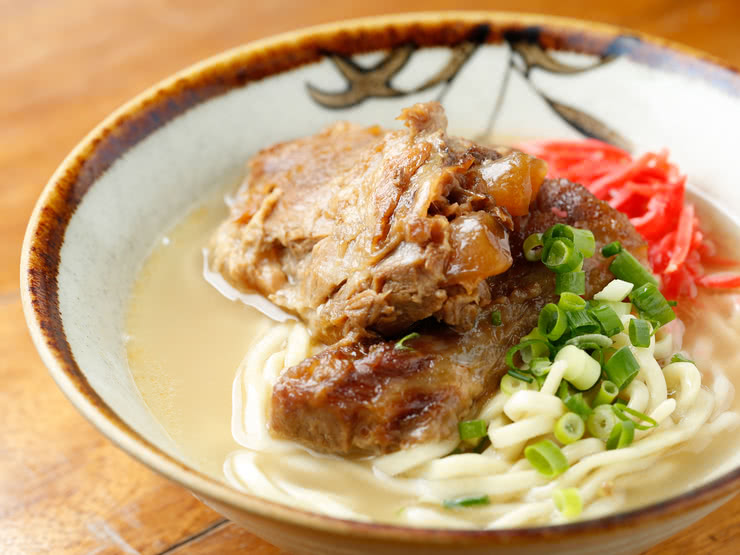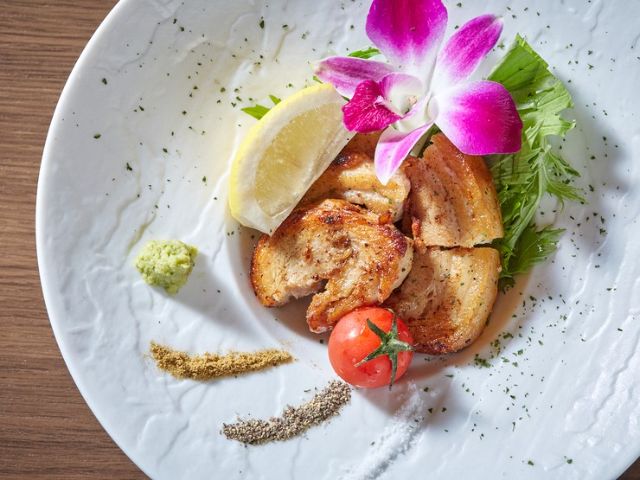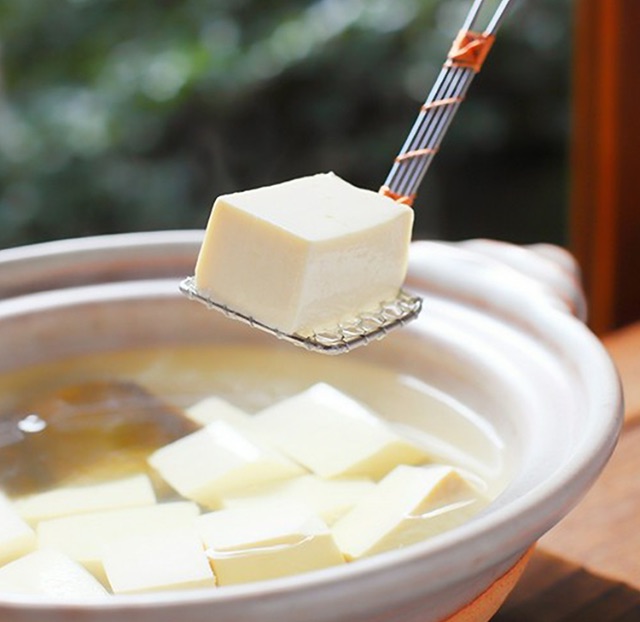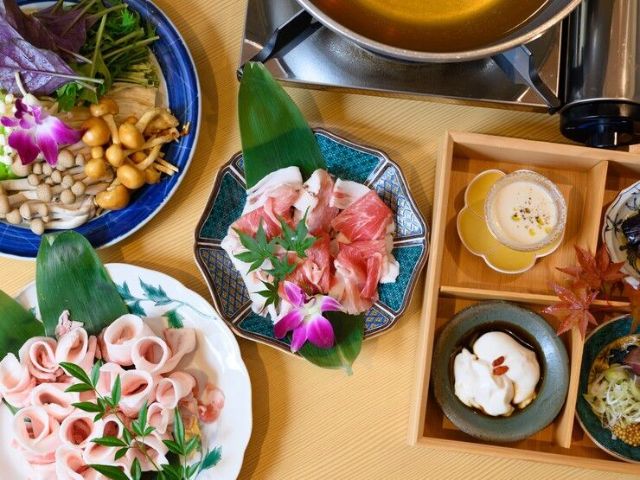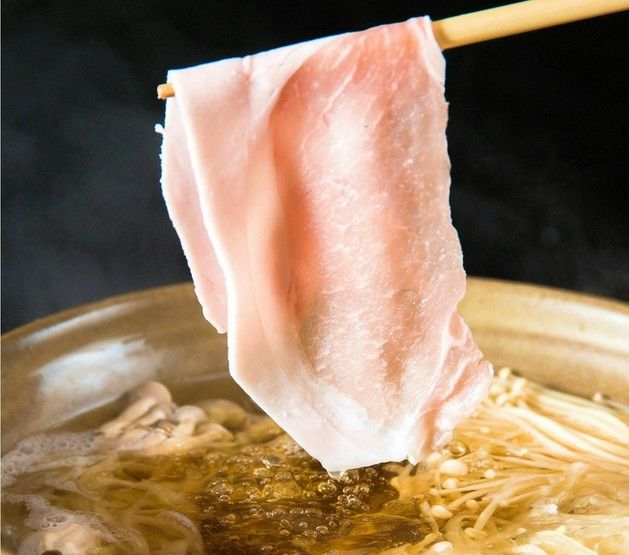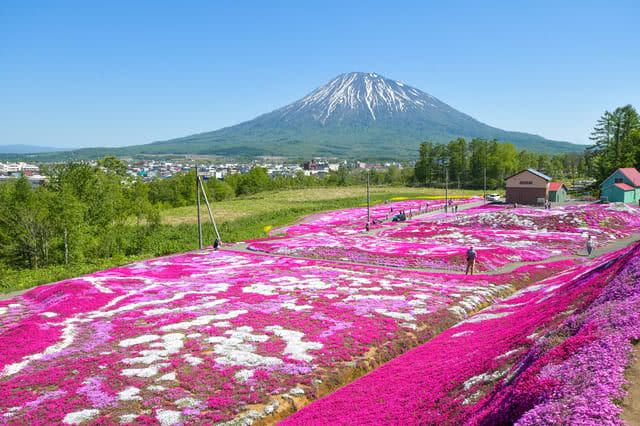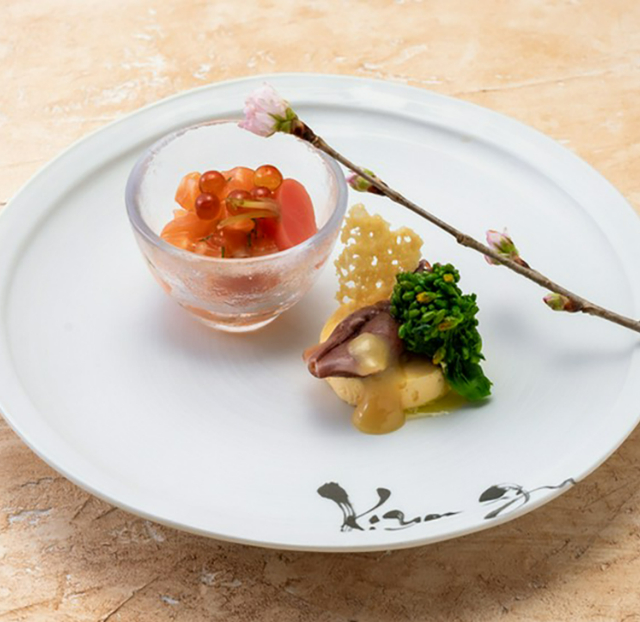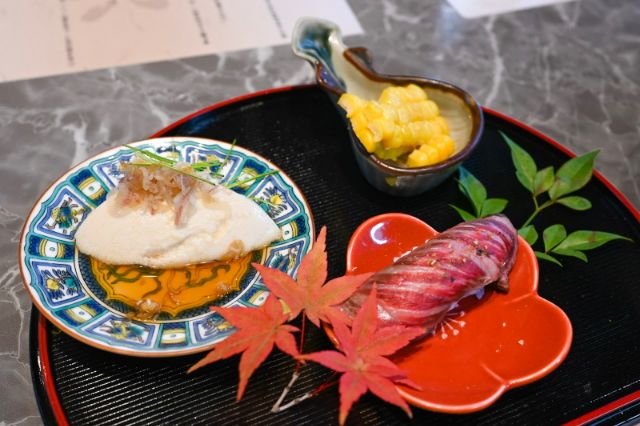The Unique Local Food of Okinawa—In a Year-Round Warm Climate

What Is Okinawa Like?
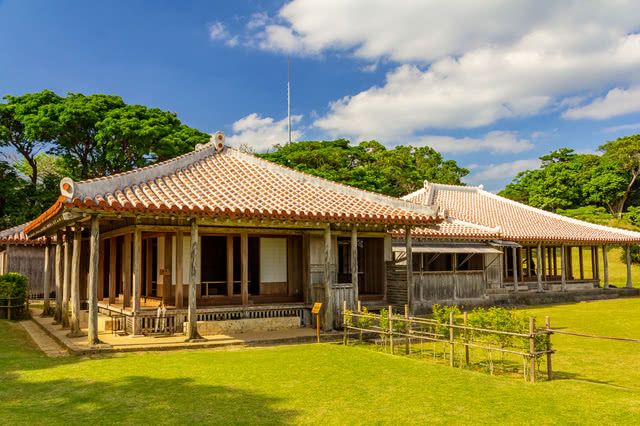
Okinawa Prefecture, located at the southwestern end of the Japanese archipelago, is a popular tourist destination consisting of 49 inhabited and numerous uninhabited islands. Here, you can enjoy both the beautiful ocean and the unique traditional local culture.
Okinawa is temperate year-round, so the beaches are usually open for most of the year, from late March through October. However, the rainy season tends to last from May to June, and the prefecture is prone to typhoons between August and September, so it is best to avoid these months if you are looking to enjoy sightseeing.
Another unique appeal of Okinawa is that it has both Natural and Cultural World Heritage sites. Iriomote Island, which is a part of the Yaeyama Islands, and the Yanbaru area in the northern part of the main island of Okinawa (introduced further later in the article), are home to clear ocean views and a variety of flora and fauna in the sub-tropical forests.
The Nakagusuku Castle Ruins, a World Cultural Heritage Site, are a historic location that is connected to Okinawa’s Ryukyu Kingdom, which lasted from the 14th century to the latter half of the 19th century. The Ryukyu Kingdom, which had a flourishing trade with surrounding regions such as China and Southeast Asia, developed a unique culture different from that of Japan's at the time.
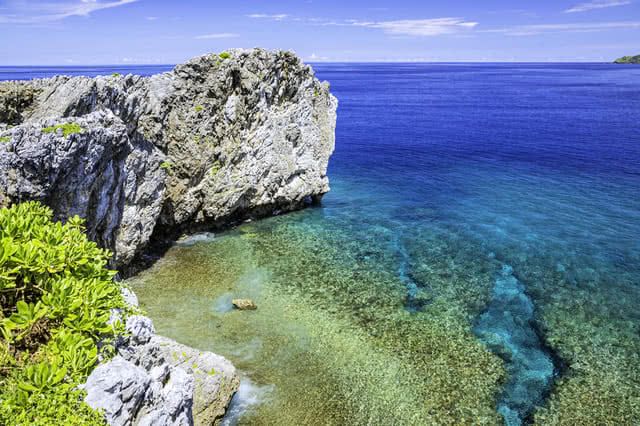
There is so much to see in Okinawa, but if you are visiting the main island, you should check out Yambaru National Park and Okinawa World!
At Yambaru National Park in the northern part of the main island, you can enjoy a variety of outdoor activities, such as canoeing among the mangrove forest of Gesashi Bay and trekking along the karst rock formations of Daisekirinzan. There are also numerous spots with stunning views, such as Cape Hedo, where you can see the emerald ocean spreading out beyond the precipitous coral reef.
Okinawa World is a theme park based on Okinawa’s nature, history, and culture. It is a great place to experience the many charms of Okinawa, with attractions such as the mystically beautiful Gyokusendo Cave, an area lined with traditional houses that are over 100 years old, and traditional performing arts shows.
Okinawa's Cuisine and Unique Food Culture
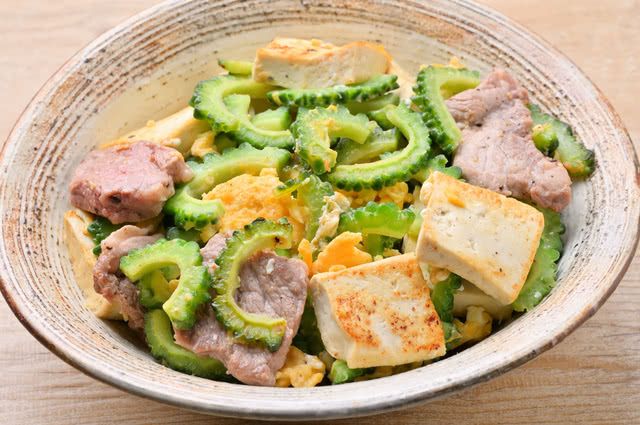
Okinawan cuisine not only adopted Japanese elements but also took strong influence from Chinese cuisine as well.
Vegetables that are unusual in other prefectures, such as "goya" (bitter melon) and "hechima" (sponge gourd), are often used, as well as broth made from bonito and pork. Goya is known for its bitterness, but it is delightful in "goya champuru" when fried together with eggs, "shima-dofu" (firm Okinawan tofu), and pork, with the bitterness stimulating the appetite.
Pork is used quite a bit in Okinawan cuisine. When traveling to Okinawa, be sure to try “rafute,” skin-on pork belly stewed for long periods in sugar, soy sauce, and awamori (a rich local alcohol made from rice). The tenderness of the meat and the way the skin seems to melt in the mouth are outstanding.
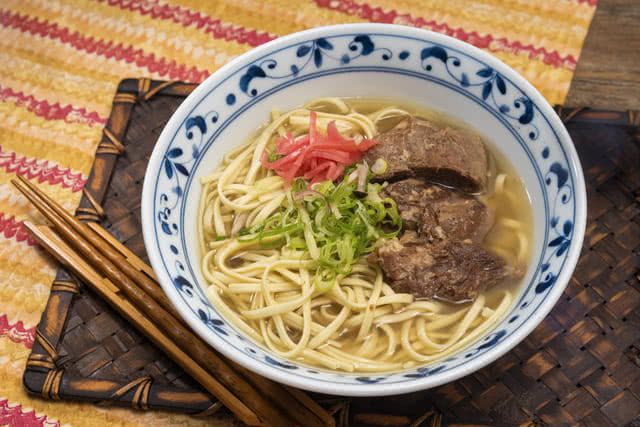
In Okinawa, every part of the pig is consumed, as reflected in the saying, “everything but the cry of the pig can be eaten.” This is based on the philosophy of “irui horui” from Chinese medicinal cooking, which teaches that pain or disease in a specific part of the body can be cured by eating the equivalent portion of a pig. There are dishes unique to Okinawa such as “ashi tibichi” (stewed pigs feet) and “chi irichi,” made by stir-frying and stewing blood with root vegetables and dry ingredients.
Another dish that is popular among tourists and commonly available at restaurants in Okinawa is “Okinawa soba.” It has thick noodles made by kneading wheat flour (not buckwheat) with "kansui" (lye water) that are served in a rich broth made from pork bone and bonito flakes with a topping of stewed pork belly.
Recommended Restaurants in Okinawa
Island songs and local cuisine Tobarama (Makishi)
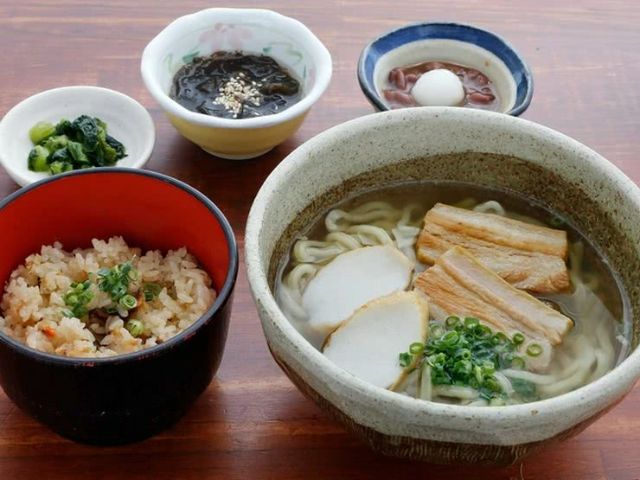
The recommended dish at Island Songs and local cuisine Tobarama is [Nankotsu Soki Soba] (902 JPY) noodles served with “soki,” which is tender, stewed bone-in pork ribs. The noodles are fresh and chewy, and they go well with the soki.
[Mozuku Tempura] (759 JPY), made with the Okinawan specialty seaweed “mozuku,” has a wonderful texture that is crunchy on the outside and chewy inside.
Pork is a major ingredient in Okinawan cuisine, and not to be missed is the Okinawan brand-name pork, "Agu." [Agu Gyoza] (660 JPY), made with Agu pork, is so juicy that the liquid seeps out when you take a bite. It is a great dish to savor the rich umami flavors and light fat of Agu meat.
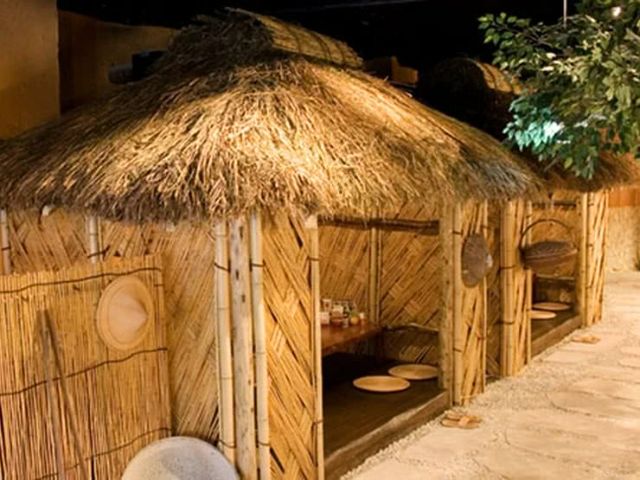
The live music performance with "sanshin" (a traditional Okinawan string instrument) that takes place every evening on the stage on the 2nd floor is also popular. Customers are invited to dance “Kachashi" (Okinawan folk dance) to the music.
Island songs and local cuisine Tobarama
Closed: We may be closed according to administrative policy.
Average price: [Lunch] 1,000 JPY
Access: 1-minute walk from Makishi Station on the Yui Rail
Address: 2-7-25, Makishi, Naha-shi, Okinawa Map
More Details Reservation
Okinawa Local Cuisine Hateruma (Kenchomae)
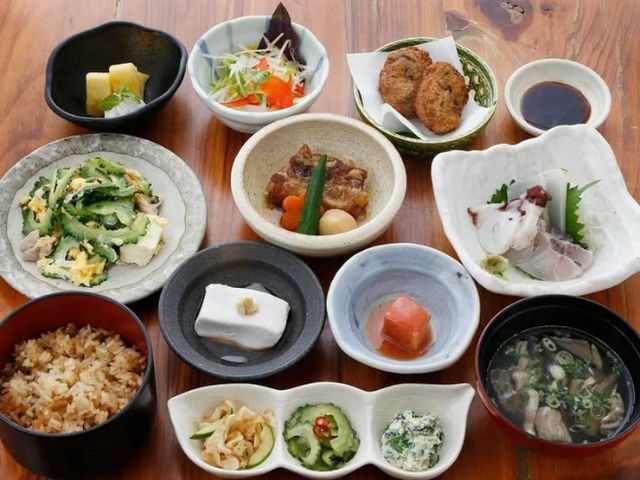
Okinawa Local Cuisine Hateruma is a restaurant where guests can experience the relaxed vibes of Hateruma, the southernmost island of Okinawa, where time seems to pass slowly. The restaurant is designed like a traditional house, and the exterior, with its stone walls, is quite enchanting.
Not to be missed at this restaurant is the [Rafute (Stewed Pork Cubes)] (880 JPY), a type of royal cuisine in the Ryukyu Kingdom. The pork that has been prepared by carefully removing the fat is so tender that it seems to melt in the mouth.
The [Fu Champuru] (750 JPY) made with "fu" wheat gluten, eggs, and vegetables is also a signature menu item. The fu coated with eggs has a pillowy texture.
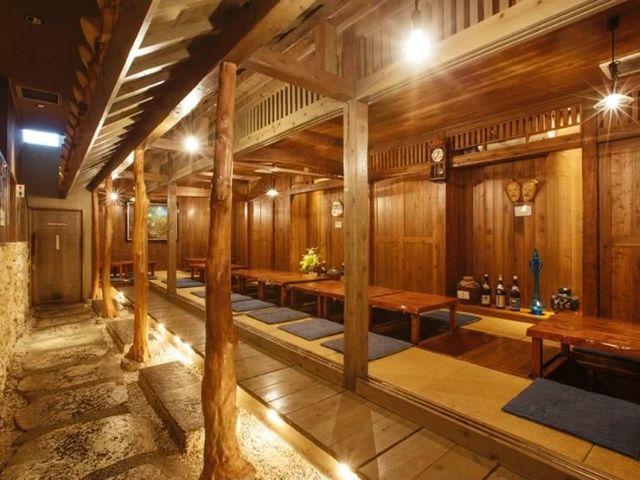
With private rooms that can accommodate 10 to 30 guests, this restaurant is great for large parties.
Okinawa Local Cuisine Hateruma
Closed: None
Average price: [Lunch] 1,000 JPY
Access: 7-minute walk from Prefectural Office Station on the Yui Rail
Address: 1-2-30, Makishi, Naha-shi, Okinawa Map
More Details Reservation
Disclaimer: All information is accurate at time of publication.
Thank you for reading our article.
Our goal is to take your culinary journey to the next level by helping you find the best restaurant. With SAVOR JAPAN, you can search and make reservations for
the Japanese Cuisine restaurants found in and around Okinawa that fill your needs.
Discover more Japanese Cuisine restaurants by area
- Tokyo Area
- Near Tokyo
- Kyoto and Osaka Area
- Hokkaido Area
- Northern Honshu (Tohoku)
- Central Honshu (Chubu)
- Western Honshu (Chugoku)
- Shikoku
- Kyushu
- Okinawa and Ryukyu Islands
Discover more restaurants to eat Japanese Cuisine by area
Keywords
Related Articles
New Articles
Categories
Cuisine
- Bars (23)
-
Japanese Cuisine (680)
- Kaiseki (46)
- Nabe (19)
- Okonomiyaki (24)
- Shabu Shabu (37)
- Soba (18)
- Sushi (137)
- Tempura (19)
- Teppanyaki (46)
- Shojin Ryori (3)
- Tonkatsu (12)
- Kushiyaki (10)
- Yakitori (45)
- Sukiyaki (35)
- Japanese Cuisine (342)
- Oyster (2)
- Sashimi/ Seafood (23)
- Unagi (eel) (32)
- Motsu Nabe (offal hotpot) (6)
- Mizutaki (chicken hot pot) (3)
- Oden (8)
- Kaisendon (seafood bowl) (11)
- Udon (2)
- Taverns(Izakaya) Cuisine (126)
- Western Cuisine (42)
- Italian/French Cuisine (94)
- Yakiniku/Steak (225)
- Chinese Cuisine (26)
- Ramen (Noodles) Cuisine (24)
- Cafe/Sweets (60)
- Other Asian Cuisine (5)
- Global/International Cuisine (7)
- Alcohol (46)
- Other (11)
Area
- Shikoku (10)
- Kyoto and Osaka (345)
-
Tokyo (462)
- Tokyo (289)
- Ginza (44)
- Roppongi (21)
- Shibuya (27)
- Shinjuku (46)
- Asakusa (20)
- Ebisu (12)
- Tsukiji (10)
- Tokyo Landmarks (4)
- Ueno (23)
- Akihabara (9)
- Ikebukuro (12)
- Jiyugaoka, Denenchofu, Nakameguro (9)
- Shimokitazawa (4)
- Kichijoji (3)
- Tachikawa (1)
- Omotesando, Harajuku, Aoyama (18)
- Akabane (1)
- Kagurazaka (4)
- Akasaka (10)
- Odaiba (1)
- Tsukishima, Harumi, Toyosu (3)
- Near Tokyo (101)
- Okinawa and Ryukyu Islands (58)
- Hokkaido (124)
- Northern Honshu (Tohoku) (31)
- Central Honshu (Chubu) (143)
- Western Honshu (Chugoku) (32)
- Kyushu (92)
Archives
- January 2026(5)
- December 2025(9)
- November 2025(4)
- October 2025(3)
- September 2025(6)
- August 2025(11)
- July 2025(19)
- June 2025(18)
- May 2025(34)
- April 2025(43)
- March 2025(30)
- February 2025(36)
- January 2025(26)
- December 2024(69)
- November 2024(31)
- October 2024(15)
- September 2024(39)
- August 2024(65)
- July 2024(31)
- June 2024(54)
- May 2024(61)
- April 2024(28)
- March 2024(31)
- February 2024(42)
- January 2024(32)
- December 2023(20)
- November 2023(5)
- October 2023(11)
- September 2023(7)
- August 2023(18)
- July 2023(8)
- June 2023(8)
- May 2023(18)
- April 2023(15)
- March 2023(1)
- January 2023(1)
- April 2022(2)
- March 2022(2)
- February 2022(1)
- January 2022(1)
- July 2021(1)
- March 2021(1)
- February 2021(1)
- December 2020(1)
- October 2020(1)
- September 2020(2)
- August 2020(10)
- July 2020(6)
- June 2020(9)
- May 2020(11)
- April 2020(8)
- March 2020(8)
- February 2020(13)
- January 2020(9)
- December 2019(24)
- November 2019(8)
- August 2019(14)
- July 2019(15)
- June 2019(18)
- May 2019(17)
- April 2019(16)
- March 2019(22)
- February 2019(22)
- January 2019(26)
- December 2018(34)
- November 2018(40)
- October 2018(32)
- September 2018(11)
- August 2018(8)
- July 2018(6)
- June 2018(9)
- May 2018(10)
- April 2018(21)
- March 2018(74)
- February 2018(39)
- January 2018(26)
- December 2017(60)
Keywords
- Omakase
- Accessible
- Affordable
- All-You-Can-Eat
- Amazing Scenery
- anime
- Art
- Autumn
- Awards
- Beer Gardens
- Breakfast
- Chef Recommendations
- Cherry Blossoms
- Chinese
- Close To Station
- Condiments
- Counter
- Coupon
- Crab
- Culture
- Dassai
- Dates
- delivery
- Early Summer
- Editor's Recommendation
- English Available
- Event
- Expo
- Fall Leaves
- Family-Friendly
- Famous Restaurant
- Famous Tourist Spot
- Fast Food
- festival
- fireworks
- Flower Farm
- Free Wi-Fi
- French
- Great Location
- Guide
- Hibachi
- hotpot
- How To
- hydrangea
- Hygiene
- Illumination
- Italian
- Izakaya
- Japanese
- Japanese alcohol
- jingisukan
- Kaiseki
- Kappo
- Kushiage
- Kushikatsu
- Kyoto
- Late-Night
- Lunch
- Manners
- matsusakagyu
- Michelin
- mizutaki
- Model Course
- monjayaki
- motsunabe
- Mt.Fuji
- Multilingual Menus
- Nabe
- Narita Airport
- New Year
- Ninja
- Noodle
- Oden
- Okonomiyaki
- omotenashi
- Onsen
- Osaka
- Osaka Station
- Photogenic Site
- pizza
- PR
- Private Room
- Ramen
- ranking
- Recipe
- Regional Cuisine
- Resort
- Rice Bowl Dish (Donburi)
- sacred places
- Sake
- Sakura
- Sashimi
- sea urchin
- Setouchi Area
- Shabu Shabu
- sightseeing
- Signature Dish
- Soba
- Solo Diners Welcomed
- Spicy Food
- Spring
- Steak
- Summer
- Sunflower
- Sushi
- takeout
- Teppanyaki
- Terrace Seating
- Tokyo
- Tokyo Experiences
- Tokyo Skytree
- Tokyo Tower
- unagi
- UNESCO
- Vegan
- Vegetarian
- Wagyu
- What Popular Gourmet Sites Recommend
- Whisky
- Wine Bar
- Winter
- Wisteria
- Workshop
- World Heritage Site
- World Writers
- Yakiniku
- Yoshoku
- Yuba
- Zen
Discover Restaurants By Area
-

Tokyo Area
Japan's largest city, Tokyo, is the center of culinary culture in Japan. Countless Tokyo restaurants serve every kind of food imaginable and the Toyosu fish market keeps restaurants stocked with the nation's finest fish.
-

Near Tokyo
Coastal areas, mountains and valleys surrounding Tokyo are bursting with tourist destinations, such as hot springs and ski slopes, where many unique foods are only available locally.
-

Kyoto and Osaka Area
The cities of Kyoto and Osaka, together with their surrounding areas, have greatly influenced Japan's culinary culture since the 7th Century. The region is renowned for its entertainment, Kobe beef, and wide-ranging traditional dishes.
-

Hokkaido Area
The island of Hokkaido is home to wide-ranging produce of the finest quality, such as rice, meat, vegetables, fish and fruit. Popular dishes from Hokkaido include robatayaki (food slowly roasted on skewers) and Sapporo miso ramen.
-

Northern Honshu (Tohoku)
The northern end of Japan's main island, Honshu, is renowned for its seasonal fruit and vegetables, nation-leading harvest of fish (especially tuna from Ohma), and delicious beef from Yonezawa, Sendai and Yamagata.
-

Central Honshu (Chubu)
Chubu is in the center of Japan's main island, Honshu, and its culinary culture reflects its position between Japan's western and eastern halves. Delicious Hida beef, world-famous Mount Fuji and many acclaimed sake breweries are in Chubu.
-

Western Honshu (Chugoku)
Chugoku, on the southwest of Japan's main island, is rich with diverse produce. Many of its products are praised as Japan's best, including Matsuba crabs from Tottori and oysters from Hiroshima. Its pears and muscats are also top grade.
-

Shikoku
The mild climate of Shikoku is ideal for growing citrus fruit such as sudachi. Shikoku is also famous for Sanuki udon noodles, huge yields of tiger prawn from Ehime Prefecture and the best torafugu (tiger globefish) in the country.
-

Kyushu
Western culture was first introduced to Japan through Kyushu, Japan's third largest island, where the influence of Portuguese and other western cuisine influenced the creation of a colorful culinary tradition.
-

Okinawa and Ryukyu Islands
Okinawa, Japan’s southernmost prefecture, is a treasure trove of distinctive dishes and drinks that have become popular throughout Japan, including Okinawa soba, unique sushi toppings and Awamori distilled liquor.
